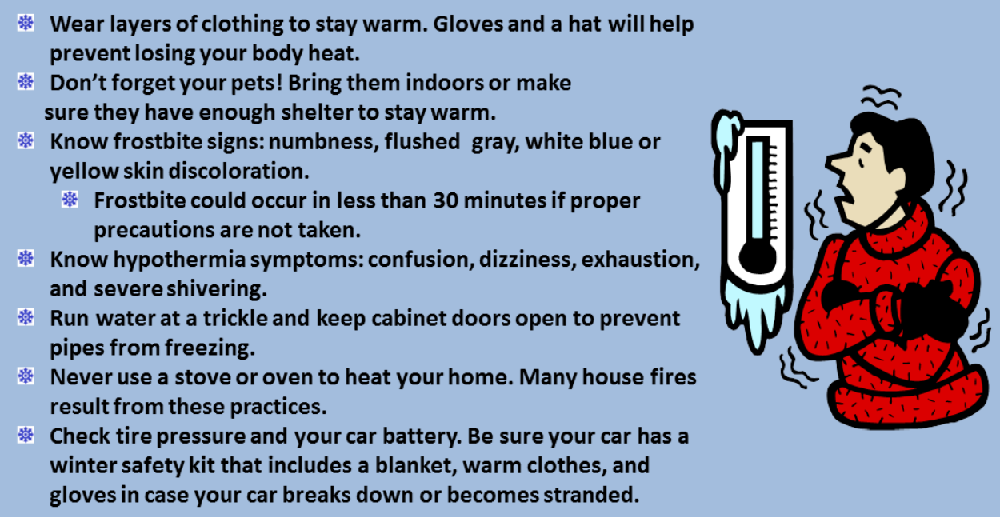How To Stay Safe In The Cold Weather

As Another Arctic Blast Approaches New Jersey, More Snow and Freezing Temperatures are Expected
January 18, 2022
A Fundraiser Has Been Set Up For a Single Mother From Ocean County Who Suffered a Tragedy
January 19, 2022How To Stay Safe In The Cold Weather

Tips On Staying Safe in Cold Weather
According to National Weather Service Meteorologist Jay Engle, those with prolonged exposure or those not dressed appropriately for the weather are in danger of frostbite and hypothermia.
Engle advises that you wear three or more layers. A thick sweater must be worn underneath, followed by a lighter jacket, and finally your winter coat." "People should really cover their heads because that's where the majority of the heat escapes," Engle added.
KEEP YOUR CAR SAFE
1. Make sure your car's lights are working properly. Any broken bulbs in your headlights, taillights, brake lights, parking lights, and hazards should be replaced. 2. Examine the brakes and tires. Because snow and ice require decent tires and strong brakes, it's a good idea to have them checked up at your local brake and tire shop. 3. Keep an eye on your tire pressure. When it becomes colder outside, tire pressure reduces. Check the required tire pressure on your vehicle's tires or on the inside of the door. 4. Make sure your wiper blades are in good shape. Driving in the snow is inconvenient, but driving with worn-out wiper blades is even more so. They're cheap to replace, costing around $20 for a pair. 5. Check the charge of your car's battery. Your car's battery and charging system can be inspected by a specialist. Batteries lose around 60% of their strength at 0°F, according to the AAA's Automotive Research Center. 6. Examine the defroster and heating systems in your vehicle. It's simple: it's chilly outside, so you need to remain warm with working heat. Working defrost settings are also required to clear the windows before leaving for work in the morning. 7. Keep the coolant level at 100%. Regularly check the coolant reservoir, and if it's low, fill it with a 50/50 mixture of coolant (antifreeze) and water.8. Before it gets too chilly, wash your automobile with LXR. When it becomes cold outdoors, no one wants to wash their car, therefore it's a good idea to detail your vehicle. LXR is an all-in-one product that cleans everything on the outside while also adding a protective layer. You won't have to worry about washing it as much because it will stay cleaner for longer. 9. Have your car inspected in general. Loose clamps, brittle hoses, fraying drive belts, oil levels, fluid levels, and air filters are all things to look for under the hood. We hope that these suggestions will assist you and your vehicle stay prepared and safe during the winter months.

